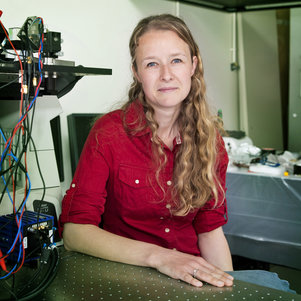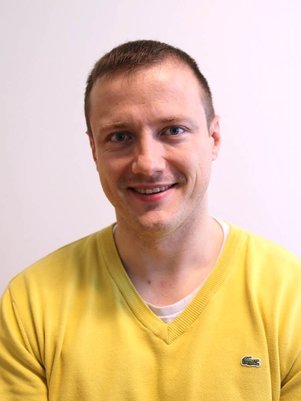The EU awarded almost 400 starting grants worth about EUR 1.5 million this week. Four went to TU Delft, and in total 44 to researchers in the Netherlands.
More flexible concrete, interstellar space travel and living materials. The subjects of TU Delft projects that receive subsidies are greatly divergent. (Photo: Dalia Madi)
The European Research Council (ERC) announced the ERC Starting Grants for young researchers. Four of them are scientists at TU Delft. The EUR 1.5 million European subsidy for a five year programme is intended to enable individual scientists to build their own teams and carry out pioneering research. The ERC is comparable to the Dutch research funder the Dutch Research Council (NWO). Researchers submit proposals and a committee makes a selection and divides the money.
In total, 397 researchers received a grant. In the country category, Germany tops the table with 72 grants. Then come France, Great Britain and the Netherlands with 53, 46 and 44 grants respectively. In shared fifth place are Switzerland and Italy with 28 grants each. Less than 10% of the applicants received a pot of money. These types of grants are criticised because of the amount of time and effort that are wasted as so many researchers are fishing in the same pond.
The four TU Delft ERC Starting Grant recipients are Marie-Eve Aubin Tam (AS), Sabina Caneva (3mE), Richard Norte (3mE) and Branko Šavija (CEG). read more about their projects below.


Living organisms are amazing for a materials expert like Marie-Eve Aubin Tam. “They change shape, they grow and respond to signals such as light and chemicals.” This is very different to our traditional artificial materials that are highly inert. “Could we not make materials like this that have sensory and responsive properties? This is what I want to investigate in the ERC project.”
Aubin Tam will use her ERC project to create the first photosynthetic live material from microalgae that is dynamic and whose shape can change through light. She believes that the project will open up possibilities for a new class of materials with real life functionalities such as changing shape and sensitivity to light. She foresees endless applications, among them in robotics.


Sabina Caneva is interested in biophysical phenomena at the smallest scale. “We focus on developing ultrasensitive nanoelectromechanical systems (NEMS) to study fundamental questions”, she writes on her website. “We tackle challenges in nanobiology, including molecular diagnostics and size-selective biomolecular transport across cell membranes.”


One way to let space probes travel billions of kilometres – and perhaps even travel to new galaxies – is by using large sails of extremely light and strongly reflective materials that are no thicker than one thousandth of a human hair. Richard Norte will use an exceptional starting grant worth EUR 2.1 million in the EARS project to work on lightweight sail materials.
“Using powerful lasers on earth, minute space probes in the form of microchips with integrated cameras, sensors and communication systems could move across huge distances,” explains Norte. This does need a new type of nanotechnology though. You can find a more detailed Delta article about Norte’s research here.


Concrete is naturally brittle. This can be a problem. Important buildings such as nuclear power plants need to be a little flexible to avoid them falling apart after earthquakes. Usually steel girders or fibres are used to strengthen the concrete and to make them more flexible.
Branko Šavija intends to use concrete to make completely new types of composites. He plans to make auxetic materials from concrete using 3D printing techniques. Auxetic materials respond unusually if they are exposed to mechanical tension and stretching. Auxetic material shrinks when under pressure, but if stretched, it thickens and expands like a sponge.
Do you have a question or comment about this article?
tomas.vandijk@tudelft.nl


Comments are closed.